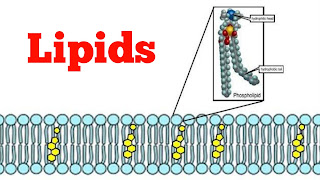The main thing that stores energy in living things is something called lipids. These are fats, like the ones you find in oils or butter. Inside our bodies, these lipids are mostly in a form called triglycerides. Triglycerides are made up of a substance called glycerol and three fatty acids. They're stored in special cells called adipocytes in animals (like us) and in seeds in plants.
When our bodies need energy, they can break down these triglycerides through lipolysis. This releases fatty acids, which can then be turned into energy. It's like unlocking the energy stored in these fats. This energy is really important for our cells. It's what helps us do everything from running around to thinking.
Another way our bodies store energy is with carbohydrates. In animals, it's stored as glycogen; in plants, it's called starch. These are quick-access energy reserves that our bodies can use when we need a sudden burst of energy. So, fats and carbohydrates both help provide the energy our bodies need to function.
FAQ About Which Macromolecule Stores Energy.
(1) Which Macromolecule Stores The Most Energy.
Triglycerides, a type of lipid, store the most energy in living organisms. Stored in cells like adipocytes in animals and seeds in plants. Triglycerides release fatty acids when needed for energy. This energy-dense macromolecule serves as a crucial long-term energy reserve in biological systems.
(2) Which Macromolecule Is Used As Our Main Source Of Energy?
Carbohydrates are primarily used as the main source of energy in our bodies. They are broken down into glucose. Glucose is readily used by cells to produce ATP. ATP is the main energy currency of cells. However, fats (lipids) also play a significant role, especially during periods of prolonged energy needs or fasting.
(3) What Macromolecule Stores Energy In The Muscles.
The macromolecule that stores energy in muscles is glycogen which is a complex carbohydrate. Glycogen serves as a readily accessible energy reserve within muscle cells. When energy is needed for muscle contraction during activities like exercise. Glycogen is broken down into glucose to fuel the muscles' energy demands.
(4) Which Macromolecule Stores Energy and Nucleic Acids.
The macromolecule that stores energy is lipids, specifically triglycerides. Triglycerides store energy in living organisms, providing a concentrated form of energy storage. Nucleic acids, on the other hand, such as DNA and RNA. DNA and RNA store and transmit genetic information rather than energy.








0 Comments
Kindly share your views